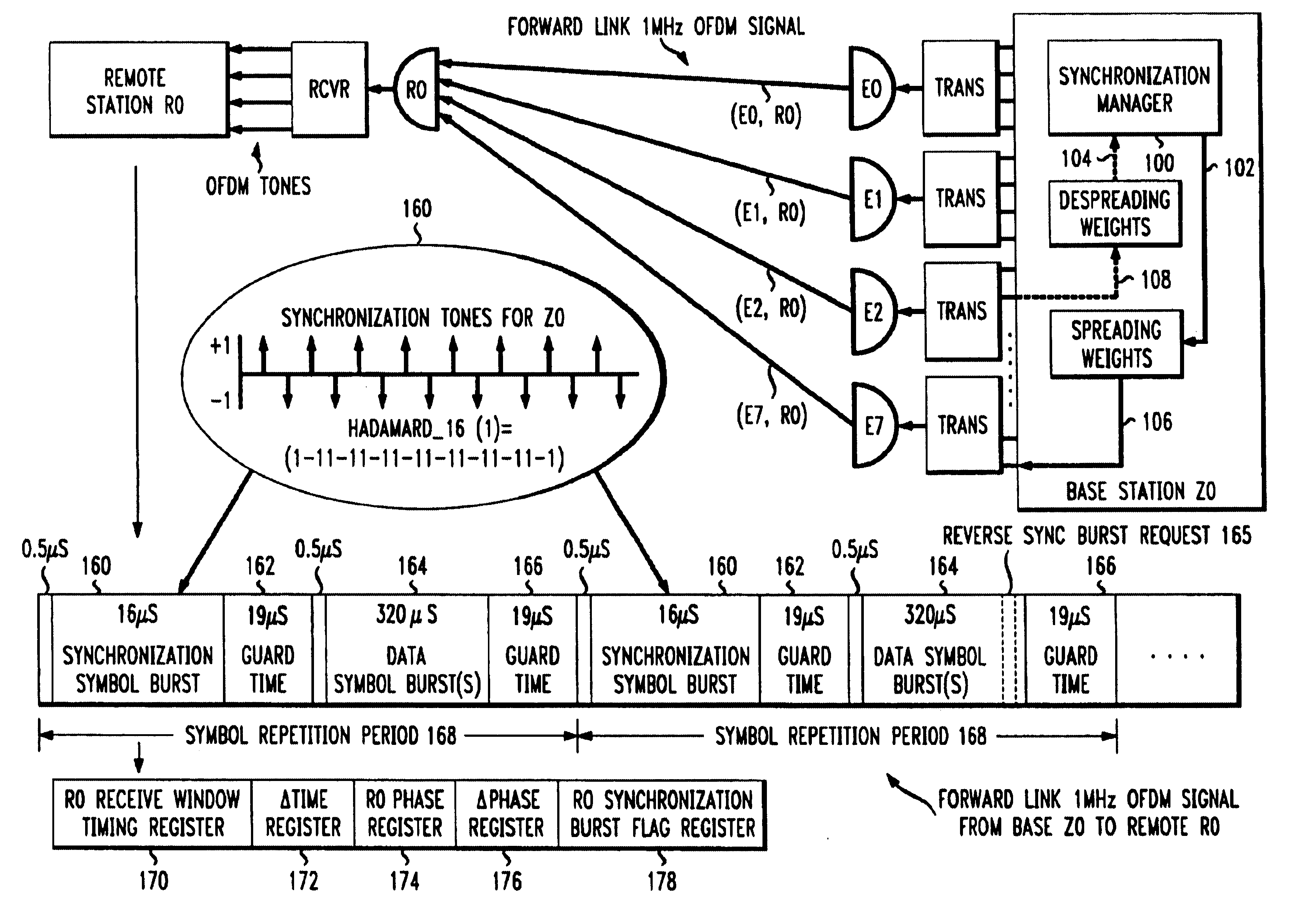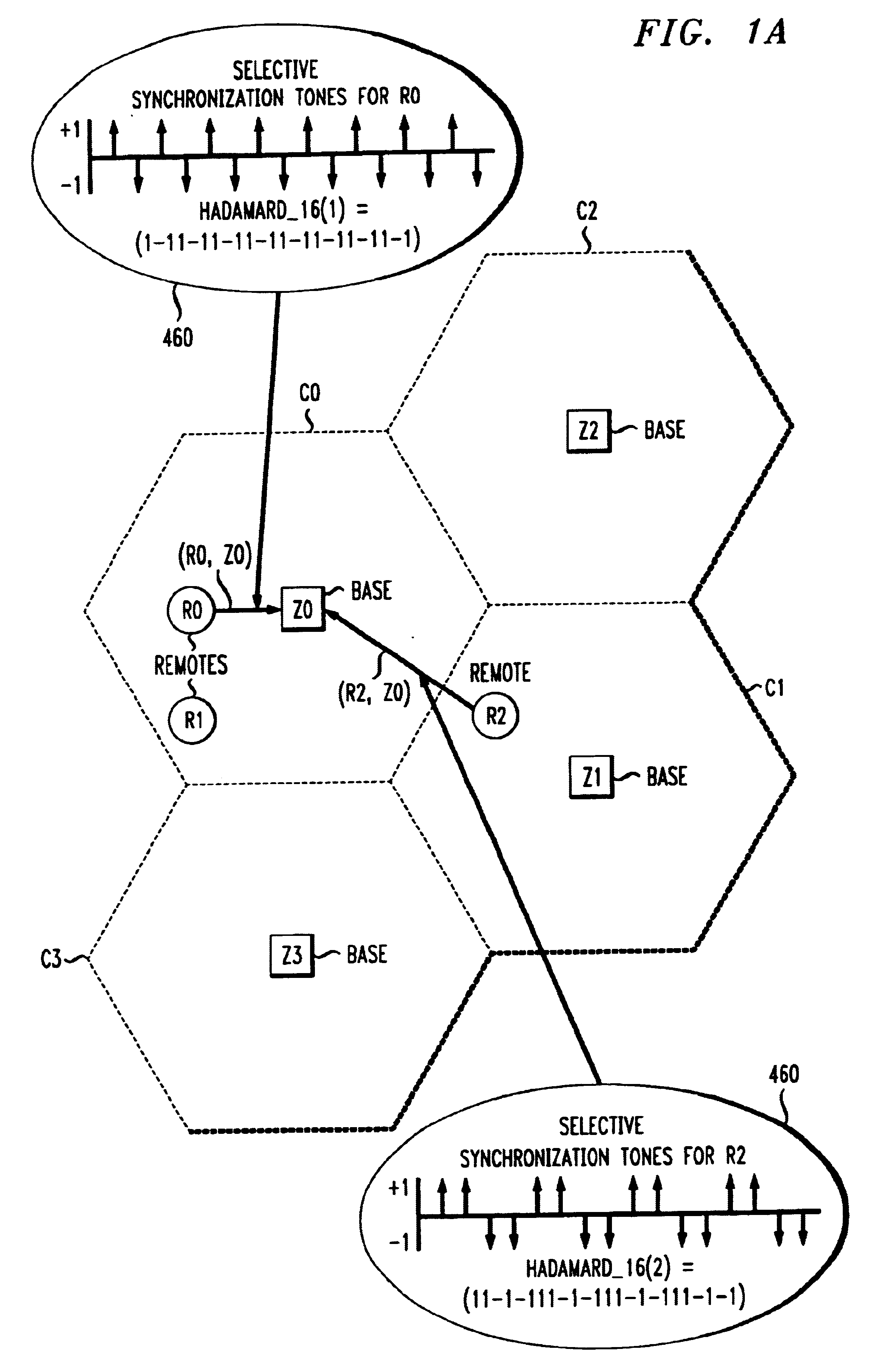Synchronization preamble method for OFDM waveforms in a communications system
a technology of preamble method and communication system, which is applied in the field of communication system and method, can solve the problems of large scale interference of all correctly synchronized users, late arrival of signals, loss of orthogonality,
- Summary
- Abstract
- Description
- Claims
- Application Information
AI Technical Summary
Problems solved by technology
Method used
Image
Examples
Embodiment Construction
A highly bandwidth-efficient communications method is disclosed that enables remote stations to synchronize in time and frequency to their serving base station. The invention enables a base station and its remote stations in a cell to synchronize in a noisy environment where signals interfere from other base stations and remote stations in other cells. FIG. 1 illustrates a multiple cell wireless communications network, where each cell C0, C1, C2, C3 includes a respective base station Z0, Z1, Z2, Z3 that has a distinctive synchronization tone pattern assigned to it. FIG. 3 shows four examples, in the frequency domain, of distinctive orthogonal frequency division multiplex (OFDM) tone patterns H.sub.-- 16[1], H.sub.--16[2], H.sub.-- 16[3], and H.sub.-- 16[4], in the forward synchronization bursts 160 the Hadamard code for each of four respective base stations, Z0, Z1, Z2, Z3 . In FIG. 1, cell C0 includes base station Z0 and remote stations R0 and R1. The adjacent cell C1 includes base...
PUM
 Login to View More
Login to View More Abstract
Description
Claims
Application Information
 Login to View More
Login to View More - R&D
- Intellectual Property
- Life Sciences
- Materials
- Tech Scout
- Unparalleled Data Quality
- Higher Quality Content
- 60% Fewer Hallucinations
Browse by: Latest US Patents, China's latest patents, Technical Efficacy Thesaurus, Application Domain, Technology Topic, Popular Technical Reports.
© 2025 PatSnap. All rights reserved.Legal|Privacy policy|Modern Slavery Act Transparency Statement|Sitemap|About US| Contact US: help@patsnap.com



